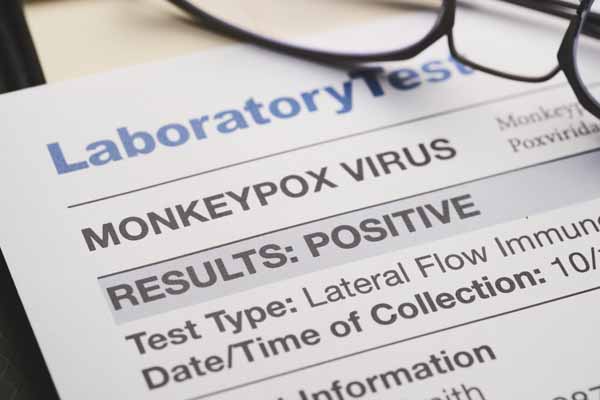
As monkeypox continues to spread in Texas, it’s possible you will encounter cases in your practice. If you do suspect a case of monkeypox, or need to prepare, the Texas Medical Association’s Committee on Infectious Diseases has these tips for you when thinking about testing for monkeypox.
Test anyone who meets at least one case criterion.
The Centers for Disease Control and Prevention’s case criteria for suspected monkeypox include a new characteristic rash associated with monkeypox lesions, or reports of the following within 21 days of disease onset:
Travel history to a region with active or endemic cases;
Contact with anyone with confirmed or probable monkeypox or a similar-appearing rash; and
Close or intimate in-person contact with individuals in a social network experiencing monkeypox activity. This includes men who have sex with men who meet partners through a website, digital application, or social event (e.g., at a bar or party).
People can be excluded as a suspect case if they do not develop a rash within five days of illness onset or if an alternative diagnosis can fully explain the illness.
It is important to also comprehensively evaluate patients who present with genital and perianal ulcers for sexually transmitted infections (STIs), which may include testing specifically for those STIs. Co-infection with monkeypox and STIs has been reported, and anyone meeting one or more of the epidemiologic criteria should be tested for monkeypox as well.
Immediately report the suspected case to your local health department.
As a notifiable condition, monkeypox cases are “immediately reportable upon suspicion,” according to the Texas Department of State Health Services (DSHS). That includes people suspected of having monkeypox, confirmed cases, and laboratory reports, all of which must be reported to your local health department. Disease reporting contact information can be found here.
Know your testing options.
DSHS recommends you check with your hospital lab and usual commercial labs for testing options. Testing is also available through public health labs. For this route, consult with your local health department, which is required prior to specimen collection. More information can be found in this DSHS guidance for public health laboratory testing.
Check specimen collection and shipping requirements prior to testing.
Labs may have different requirements for the specimen samples they will accept, and physicians should familiarize themselves with the requirements prior to collecting the sample. In general:
Ensure staff are wearing appropriate personal protective equipment (gowns, gloves, eye protection, and N95 respirator) while collecting samples.
Vigorously swab or brush lesions with two separate sterile synthetic swabs. Do not use cotton swabs.
Collect samples from multiple lesions on different parts of the body, if applicable. Lesions do not need to be deroofed to get an adequate sample.
Break off the end of the applicator of each swab into a 1.5- or 2-ml screw-capped tube with O-ring or place the entire swab in a separate sterile container. Do not add or store in viral or universal transport media.
Store the swab and ship the sample as directed by the lab, which may require the sample to be frozen depending on the time since collection.
Use this CPT code to bill for testing.
The American Medical Association has approved a new CPT code for monkeypox testing. The laboratory test CPT code 87593 "describes molecular diagnostic testing that detects the nucleic signature of an orthopoxvirus, including the monkeypox virus."
As of this writing, DSHS was reserving monkeypox vaccine supplies for people with a documented or presumed exposure to the virus. Read Texas Medicine Today for vaccine updates.